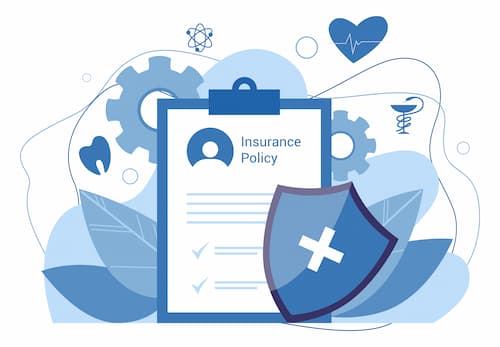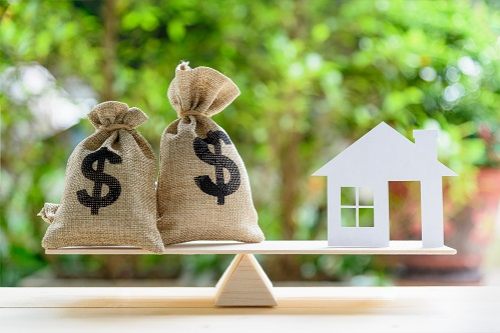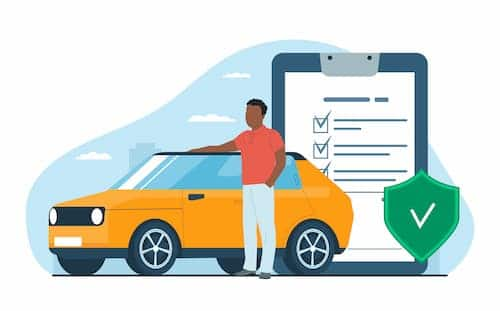How many homeowners are uninsured in the U.S.?
The Fed’s study found that 63% of U.S. adults are homeowners, and of those, 7% don’t have homeowners insurance on their primary residence. This translates to approximately 11.8 million U.S. adult homeowners without homeowners insurance.
The study found divisions based on family income and savings.
Almost 30% of those with a family income of $25,000 or less lacked homeowners insurance, dropping to 2% for those with a family income of $100,000 or more. The same trend can be found based on families' emergency savings. Of those with emergency savings of $500 or less, 18% were without home insurance, while only 3% of families with $2,000 or more in savings went without.
Lenders typically require borrowers with home loans to carry adequate levels of homeowners insurance.
“In most cases, those who have a financial interest in your home — such as a mortgage or home equity loan holder — will require that it be insured,” Worters says.
What parts of the U.S. have the most uninsured homes?
The problem of uninsured homes is worse in some places than others.
For instance, in the West South Central Division, which includes Arkansas, Louisiana, Oklahoma, and Texas, 13% of homeowners were without insurance, while in the New England region, only 2% were without.
| Census Region | Percentage without homeowners insurance on primary residence |
|---|---|
| New England (Connecticut, Maine, Massachusetts, New Hampshire, Rhode Island and Vermont) | 2% |
| Middle Atlantic (New Jersey, New York and Pennsylvania) | 4% |
| East North Central(Illinois, Indiana, Michigan, Ohio and Wisconsin) | 5% |
| West North Central (Iowa, Kansas, Minnesota, Missouri, Nebraska, North Dakota and South Dakota) | 4% |
| South Atlantic (Delaware, District of Columbia, Florida, Georgia, Maryland, North Carolina, South Carolina, Virginia and West Virginia) | 7% |
| East South Central (Alabama, Kentucky, Mississippi and Tennessee) | 9% |
| West South Central (Arkansas, Louisiana, Oklahoma and Texas) | 13% |
| Mountain (Arizona, Colorado, Idaho, Montana, Nevada, New Mexico, Utah and Wyoming) | 5% |
| Pacific (Alaska, California, Hawaii, Oregon and Washington) | 5% |
The study data doesn’t break it down by individual states or cities, but it does show a slight difference in insurance levels between metro and non-metro areas. Ten percent of homeowners in non-metro areas went without homeowners insurance, while only 6% in metro areas did the same.
There wasn’t much correlation between regions where homeowners were financially affected by natural disasters and regions with higher levels of homeowners not having home insurance.
Both the West South Central and South Atlantic Regions show that 35% of residents are financially affected by a natural disaster or severe weather, but the West South Central region has almost double the number of adults without homeowners insurance on their primary residences (13%) as the South Atlantic region (7%). If the data were broken down at the state level or lower, there may be more overlap.
However, it’s worth noting that states in the West South Central region have some of the highest home insurance rates in the nation, which may impact homeowners’ decisions to pass on coverage.
Why are people dropping homeowners insurance?
According to the Fed study, “The majority who went without homeowners insurance did so because of cost.” Forty-three percent of those going without said it was because it wasn’t affordable, with another 18% saying “it is not worth the cost.” And 7% said it was because “no insurance company will insure my home.”
Worters says many factors are behind the recent homeowners insurance price increases, including:
- General inflation
- Replace-cost inflation, due to supply-chain issues and labor shortages that increase home repair and replacement costs
- Losses related to natural disasters
However, rising costs date back more than 20 years. Worters, citing data from the Insurance Research Council, says homeowner's insurance premiums rose consistently from 2001 to 2021.
The rate of increase surpassed household income growth, which has made insurance less affordable for many homeowners.
“As expected, disaster-prone states have the least affordable homeowners insurance,” Worters says.
For example, hurricane-prone Florida has some of the highest insurance rates in the country.
Worters says legal system abuse is another factor driving up costs. This includes false claims of damage to homes, which is common in disaster-prone areas.
“Claims of roof damage in particular, dramatically increase the costs of insurance,” she says.
The risks of going without homeowners insurance
Unless your lender requires you to carry homeowners insurance, you can probably get away without doing so.
“Legally, you can own a home without homeowners insurance,” Worters says.
However, forgoing insurance can be risky. If you don’t have adequate insurance and a hurricane, tornado or other disaster badly damages your home, you could face steep out-of-pocket losses. Erika Tortorici, owner and principal of Optimum Insurance Solutions, says, “That could mean dipping into retirement savings or other long-term funds to cover costly repairs or a total rebuild.”
A home is the largest asset that many people own, Worters says. Not only does a homeowners policy insure your structure, but it also covers your personal belongings and offers liability protection in the event of an injury or property damage lawsuit.
“Imagine what would happen if someone was injured or died on your property and their family sued you,” she says. “Or a hurricane totally destroyed your home. The risks are enormous.”
Other coverages to consider are flood insurance and earthquake insurance. Worters says that if you have a home mortgage, your lender may require you to carry some or all of these types of insurance.
Michelle White, National Mortgage Expert with The CE Shop, says that at closing, you probably received a “Homeowners Insurance Requirements Disclosure” that should outline your insurance requirements.
If your insurance company drops you, you can request an explanation for why the policy is being dropped.
“The first step is to ask the insurer for a clear explanation of why the policy was canceled. In some cases, if the reason doesn’t hold up, the decision can potentially be overturned. If the cancellation stands, the homeowner will need to shop for a new policy,” Tortorici says.
Whether your insurer cancels the policy or you do, your mortgage company will respond.
“Your lender/servicer will also be notified of [the] cancellation and will send you notice with the time frame you have to obtain a new policy and the cost of the force-placed premium. If you do not replace the policy within the time frame provided, the lender may impose force-placed insurance. This coverage protects only the lender and not you. It is extremely expensive,” White says.
What to do if you can’t afford homeowners insurance
If your homeowners coverage has become too expensive, there are things you do to lower your costs.
"The first thing we tell people is to raise your deductible," Worters says.
The insurance deductible is the amount of money that you are responsible for paying toward an insured loss. "The higher your deductible, the more money you can save on your premium," she says.
Of course, you should not raise your deductible unless you are sure you can afford to pay it if you file a claim.
"If you live in a disaster-prone area, your insurance policy may have a separate deductible for damage from major disasters," Worters says. "So, be sure you take this into account when considering whether to raise your standard homeowners deductible."
Making your home more resistant to disasters also might drop the cost of your coverage.
"You will have more insurance options to choose from if you take certain preparedness steps — for example, installing storm shutters and shatterproof glass, or reinforcing your roof," she says.
Older homes can be retrofitted to make them better able to withstand earthquakes, she adds. Modernizing heating, plumbing and electrical systems can reduce the risk of fire and water damage.
Other tips for lowering insurance costs include:
- Ask about discounts, such as for bundling coverage or installing home security devices. You also might earn a loyalty price break for remaining with the same insurer for a long period.
- Look into group insurance programs, such as through your employer. These often come at lower costs.
Getting homeowners insurance in a high-risk area
States such as California and Florida have seen insurance companies withdraw from offering homeowners coverage, making it more difficult for some homeowners to secure coverage.
In particular, it might be more difficult to find good coverage in areas where natural disasters such as wildfires and hurricanes are a regular occurrence.
If you are buying a new home, Worters suggests asking the real estate agent, mortgage lender or builder for names of companies that write policies in your area.
"If it’s an existing home, ask the previous owners who insured the house," she says.
Your state insurance department also might help you locate insurers in your area.
If you still can’t find coverage, consider the following:
- Upgrades to the house—including trying to make it more "disaster-proof"—will make the property more attractive to insurers.
- Inquire about FAIR plan coverage, an insurance pool found in many states that helps provide property insurance to people who can’t get coverage in the voluntary market. Some states offer an alternative to FAIR plans known as beach and windstorm plans.
- Explore the excess and surplus market, which can help you find coverage for high-risk homes and businesses.
Source
Federal Reserve. “Economic Well-being of US Households in 2024 report.” Accessed June 2025.






